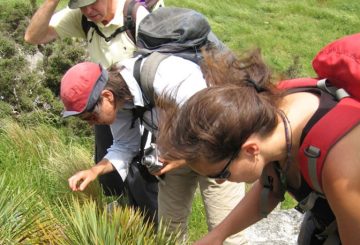뉴질랜드의 숨겨진 대륙 질란디아 (Zealandia) 는 최근 연구에서 더 많은 비밀을 밝혀냈습니다.95% 가 수중에 있지만, 현재 이 8개 대륙의 최신 지도가 공개되었습니다.이러한 발견은 전 세계에 대륙이 7개밖에 없다는 일반적인 믿음에 도전합니다.
호주 남동쪽에 위치한 질란디아는 주로 1~2km의 수중에 잠겼기 때문에 375년 동안 눈에 띄지 않았습니다.최근 연구자들은 이 지역의 상세한 지도를 공개하여 2천 5백만 년 전의 지형성과 침수에 대한 통찰력을 제공합니다.
질란디아는 약 8300만 년 전에 곤드와나 초대륙에서 분리된 것으로 추정됩니다.2002년 연구에 따르면 질란디아 위의 바다는 더 얕아서 대양판이 아니라 대륙판이 존재한다는 것을 알 수 있습니다.
2017년, 종합적인 증거를 통해 질란디아가 대륙이라는 사실이 확인되었습니다.그러나 그 전체 역사는 여전히 수수께끼로 남아 있는데, 이는 주로 곤드와나에서 분리되면서 생긴 변형으로 인한 것입니다.
최근 연구에서는 질란디아 최북단인 페어웨이 산맥의 암석을 분석했습니다.이 암석들 중 일부는 1억 3천만 년 이상 된 것으로, 서남극의 지질과 일맥상통하는데, 이는 이들이 한때 서로 합쳐졌음을 알 수 있습니다.
지각판 움직임을 보여주는 자기 변칙 현상을 이용한 연구를 통해 시간이 지남에 따라 질란디아가 얇아져 물에 잠겼다는 사실이 더 밝혀졌습니다.
질란디아의 전체 이야기는 수중 위치 때문에 대부분 숨겨져 있습니다.





























































